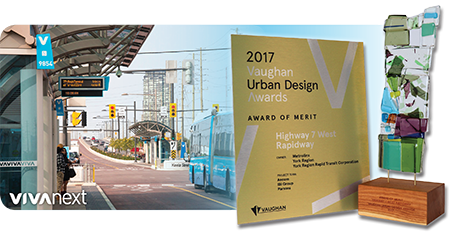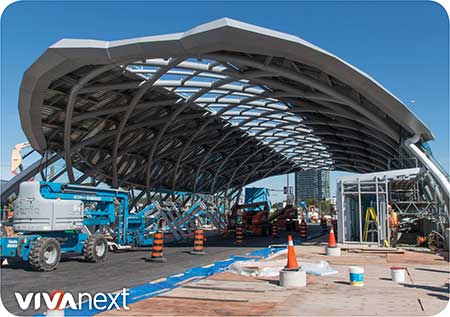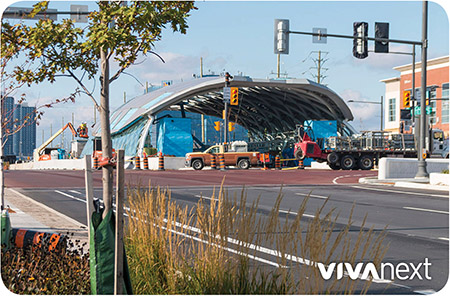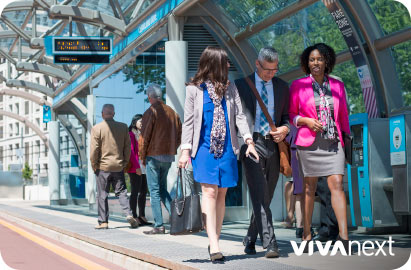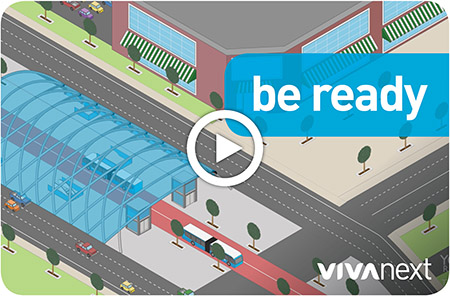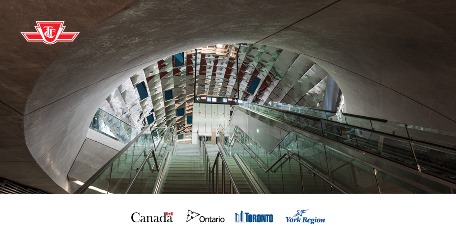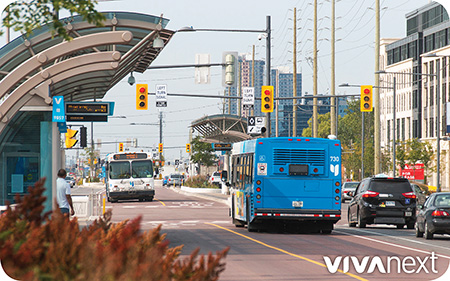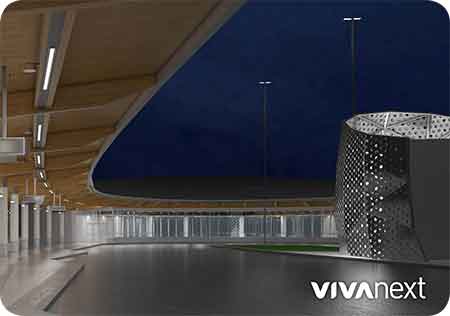
Building transit infrastructure comes with some mandatory requirements, and not all of them are pretty, at least not to start. Take a vent shaft, an absolute necessity for the subway to vent air and for fire safety. One of these vent shafts had to be located right in the middle of our new SmartCentres Place Bus Terminal.
design becomes experience
Who says vent shafts have to be ugly? At vivaNext, we know that the design of a place becomes the experience. SmartCentres Place Bus Terminal is a new breed of bus terminal – beautiful, airy and open, not at all like the stereotypical bus terminal of yesteryear.
In the middle of this, the eyesore of a square, unattractive vent shaft simply would not do. Since the vent shaft was already the centrepoint, we transformed it into the centerpiece, designing it as an artistic element of the bus station.
catching the light
The vent shaft will still be there, masked by a far more elegant exterior. Flat, stainless steel metal panels punched through with a flower pattern were fastened together to create a curved shape, almost diamond-like in appearance.
In the sunshine, it will catch the light. At night, it will be lit up from the inside. Through it all, the air from the subway will vent, serving its purpose, and proving that, yes, vent shafts can be beautiful.



